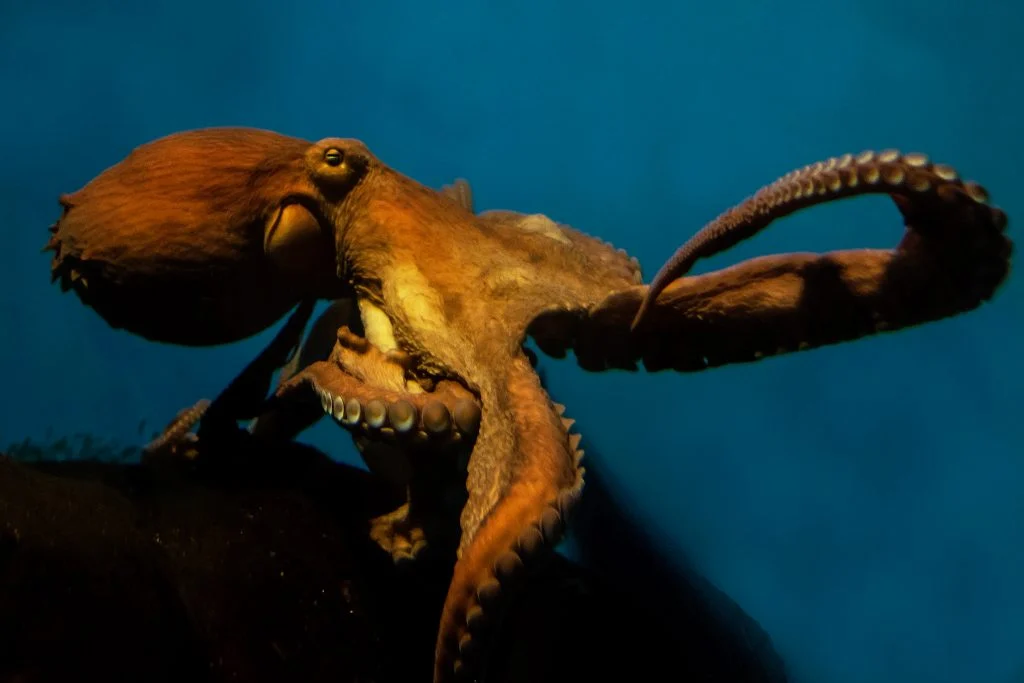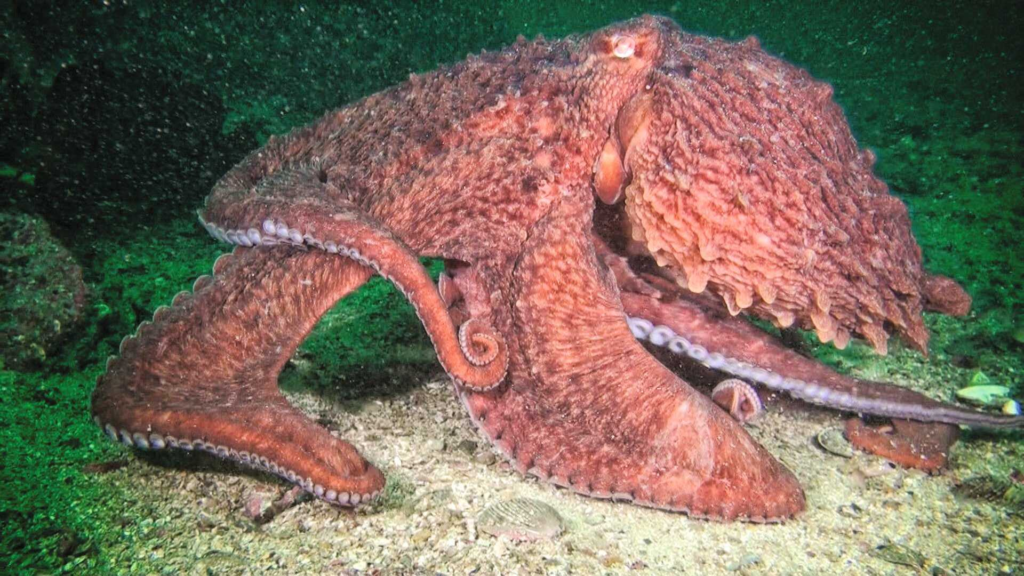
giant octopus

Introduction to the Giant Octopus
What is a Giant Octopus?
The giant octopus is a captivating marine creature, part of the cephalopod family, which also includes squids and cuttlefish. The most well-known species, the Enteroctopus dofleini or Giant Pacific Octopus, is revered for its impressive size and intelligence. These enigmatic creatures often grow to weigh over 100 pounds and can span up to 16 feet across when fully extended.giant octopus
Why are Giant Octopuses Fascinating?
Beyond their size, giant octopuses are known for their near-mythical status. They’re escape artists, problem solvers, and masters of disguise. Their ability to interact with their environment in almost human-like ways has made them a favorite subject for marine biologists and ocean enthusiasts alike. The giant octopus represents the mysterious, untamed beauty of the underwater world. giant octopus
Physical Characteristics of the Giant Octopus
Size and Weight
The Giant Pacific Octopus holds the record as the largest octopus species. With specimens reaching weights of over 600 pounds in rare cases, their sheer scale is awe-inspiring. However, the average size is closer to 100–150 pounds. Their arms can stretch up to 16–20 feet, making them formidable predators in their oceanic homes. giant octopus
Unique Anatomy (Arms, Suckers, and Skin)
One of the most remarkable features of the giant is its eight powerful arms, each lined with hundreds of suckers. These suckers can lift weights and even taste what they touch, thanks to specialized sensory cells. Their soft, boneless bodies allow them to squeeze into impossibly tight spaces, a trait that highlights their adaptability.
Extraordinary Color-Changing Abilities
The skin of a giant is covered in chromatophores—pigment-filled cells that allow them to change color and texture instantly. This ability isn’t just for camouflage; it also plays a role in communication, mating displays, and startling predators.
Habitat and Distribution
Preferred Ocean Zones
Giant octopuses typically reside in cold, oxygen-rich waters. They prefer rocky underwater terrains where they can hide in dens or caves. These areas provide both shelter from predators and a strategic location for ambushing prey.
Geographic Range of Giant Octopuses
The Giant Pacific Octopus is predominantly found in the northern Pacific Ocean, ranging from Alaska to Japan. However, other species of large octopuses inhabit different regions, showcasing their adaptability to diverse marine environments.
Environmental Adaptations
Their ability to survive in extreme conditions—ranging from shallow intertidal zones to depths of 4,000 feet—is a testament to their evolutionary success. octopuses possess gills that allow efficient oxygen absorption, even in frigid, low-oxygen environments.
Diet and Feeding Habits
What Do Giant Octopuses Eat?
As opportunistic hunters, giant feed on a variety of marine life, including crabs, clams, fish, and even small sharks. Their powerful beak, hidden beneath their arms, is capable of cracking open the toughest shells.
Hunting Techniques and Intelligence
Giant octopuses employ cunning strategies to catch their prey. Whether it’s sneaking up on unsuspecting crabs or luring fish into a trap, their intelligence is evident in every move. They are known to use tools, such as rocks, to access hard-to-reach food.
Interaction with Marine Food Chains
As both predator and prey, giant s play a vital role in the marine ecosystem. Their consumption of crustaceans and other animals helps maintain population balance, while their own vulnerability to sharks and whales connects them to the broader food web.
Behavior and Intelligence
Problem-Solving Skills
Giant octopuses are celebrated for their remarkable problem-solving abilities. They’ve been observed escaping from aquariums, opening jars to retrieve food, and even outsmarting traps designed by researchers.
Interaction with Humans
Although shy by nature, these creatures exhibit curiosity towards humans during underwater encounters. Divers often report playful interactions with octopuses, from gentle arm touches to attempts at stealing cameras.
Defensive Behaviors
When threatened, a giant octopus can squirt ink to create a smokescreen, confuse predators with rapid color changes, or retreat into tight spaces. Their ability to regenerate lost limbs is another fascinating defense mechanism.
Reproduction and Lifecycle

Mating Rituals
Giant octopuses have unique mating behaviors. Males use a specialized arm called a hectocotylus to transfer spermatophores to the female. This process is delicate, as the female is much larger and could harm the male.
The Role of the Mother Octopus
After mating, the female devotes herself entirely to her eggs, laying up to 100,000 of them in protected caves. She guards them vigilantly, often neglecting her own needs until the eggs hatch.
Lifespan and Development Stages
Despite their impressive size and intelligence, giant octopuses have relatively short lifespans, averaging 3–5 years. After the eggs hatch, the mother typically dies, leaving the hatchlings to fend for themselves.





